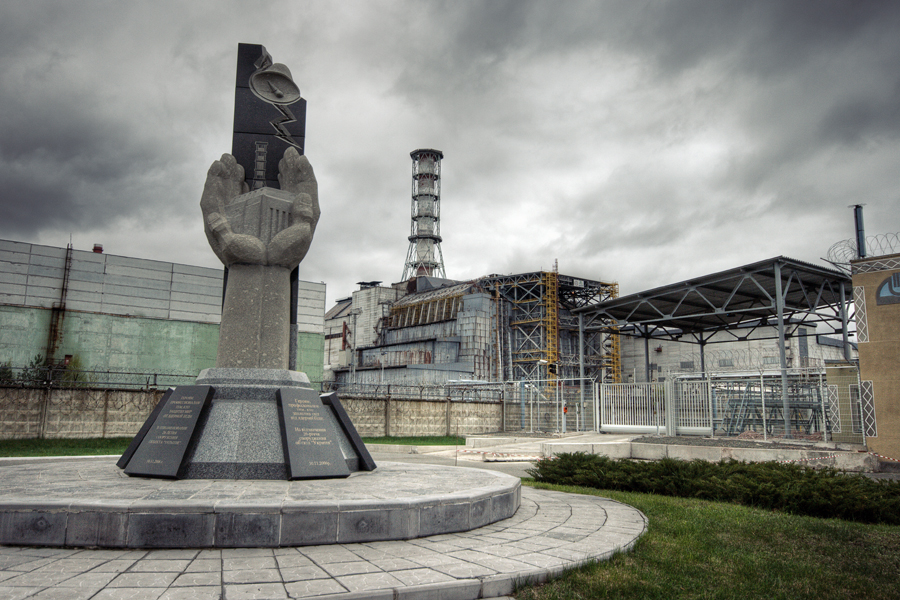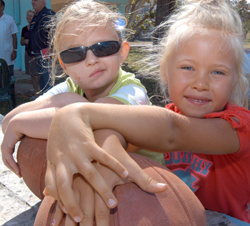Cuba Treats Nuke Accident Victims
By Patricia Grogg*

HAVANA TIMES, May 7 (IPS) – Thousands of kilometers from the Ukraine, where the worst nuclear accident in history occurred 23 years ago, the sun and fresh air of a Cuban beach provide therapy for Ukrainian children, who continue to be born with problems stemming from the disaster.
The day was just beginning on April 26, 1986, when Reactor 4 exploded at the Chernobyl nuclear power plant, then part of the Ukrainian Soviet Socialist Republic. According to witnesses, the explosion sent the temperature up to a searing 2,500 degrees, melting everything nearby. A cloud of radioactive dust spread over much of Europe.
The radiation released during the disaster caused a wide range of ills among the population, like cancer and birth defects.
Four years later, children and teenagers from the disaster area began arriving in Cuba. The first 139 were the beginning of a vast aid project that has now benefited more than 24,000 people. According to Cuban authorities, this help will continue as long as Ukraine needs it.
Cuba’s Chernobyl children’s program – which until 1992 also received patients from Russia and Belarus – is centered in Tarara, some 20 km east of the capital, and includes a small hospital, a school with Ukrainian teachers and several dozen comfortable housing units.
“From here they move through our entire health system, depending on their needs,” said director Julio Medina. That was his explanation for not making dollar estimates of the assistance that Cuba provides free of cost.
“The important thing is to provide all the medical attention that these children and young people need,” he said.

The project operates through an agreement between the two countries’ health ministries. Medina also mentioned the participation of the International Fund for Chernobyl, a Ukraine-based non-governmental organization that estimates Cuba’s expenditures to be 350 million dollars in medications alone.
Ukraine covers transportation, while room and board and medical services provided in Cuba are covered by the host country.
The patients themselves are aware of the costs. “In my country, the treatment that my son receives would cost 80,000 euros (US $105,362),” said Natalia Kisilova, mother of Mikhail Kisilov, a 15-year-old boy who was born with one outer ear and auditory canal missing.
Doctors involved with the program that work in Ukraine assessed his case and sent him here two years ago. Cuban professionals immediately began treatment to correct the deformity.
“We lived in the accident zone and in the last few years at least four babies have been born with similar problems to my son’s… I have no doubt that it is a consequence of the accident,” said Kisilova, who believes this medical program “is the most humanitarian in the world.”
But Medina and pediatrician Arístides Cintra agree that they can’t always be scientifically sure that the problems they are treating were caused by the nuclear disaster, because they present in the same way as they would for people who were never exposed to radiation.
“In any case, the recovery rate is more than 90 percent,” said Medina.
The most frequent problems are thyroid cancer, leukemia, muscular dystrophy, psychological and neurological ailments, as well as skin diseases that are not cured in Ukraine, such as vitiligo, psoriasis and hair loss.
The reactor explosion released, among other radioactive substances, cesium-137, which remains active much longer than other types. “People exposed to cesium-137 are at risk of contracting illnesses, which is why we assess even apparently healthy children who live in contaminated areas,” explained Cintra.
The Chernobyl plant was finally shut down in 2000, with an international commitment for financial aid to the Ukraine to complete efforts to confine radioactive material and build more modern reactors to make up for the electricity shortage. The budget for a steel shell to cover the radioactive core is about 1.4 billion dollars.
That same year, Cuba stopped work on construction of a nuclear power plant begun during the era when the USSR was the island’s main ally. The plant would have produced the equivalent of energy from 700,000 tons of petroleum. Cuba opted for “more efficient and less costly” solutions, such as gas derivatives from domestically drilled crude.

The energy strategy promoted in that decade was based on the search for petroleum, the more efficient use of existing sources and development of renewable energy sources. If the plant had been built, Cuba would have been just the fourth Latin American country with nuclear energy, after Argentina, Brazil and Mexico.
Despite the Chernobyl accident, nuclear “is a profitable, safe and supremely economic source,” said Ukraine business attaché Oleksandr Khrypunov in an interview. Ukraine currently has 15 nuclear plants, which provide 30 percent of the electricity consumed, and is building two more, according to the World Nuclear Association.
An Association report counts 436 nuclear power plants in operation in 30 countries, and another 44 under construction. Of the total, 104 belong to the United States (a staunch opponent of the Cuban project to build reactors using Soviet technology), 59 to France, 51 to Japan and 31 to Russia.
According to Khrypunov, between 1987 and 2004, just over a half-million people died from the effects of radiation. In Ukraine alone, an additional 2.3 million people suffered damages to their health, including about a half-million children. “Most of those who go to Tarara are victims of that disaster,” he said.
The economic losses from the accident continue to accrue, but the risks to the population have been considerably reduced, and young people rarely talk about it anymore, said Khrypunov. “Chernobyl has passed to second or third place on the scale of people’s worries,” he said.
*This story is part of a series of features on sustainable development by IPS – Inter Press Service and IFEJ – International Federation of Environmental Journalists, for the Alliance of Communicators for Sustainable Development (www.complusalliance.org).
